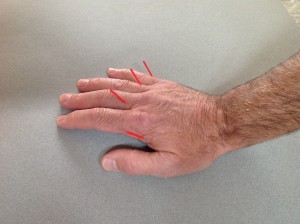Halloween is almost here; a time when small people transform from children to goblins, superheroes, princesses—and of course, ghosts. It’s a season of pumpkins, candles, and all things scary. We often forget that Halloween comes from the term All Hallows Eve, the night before the Day of the Dead, when we honor those who have passed before us.
Halloween then, is really a day about spirits or ghosts, and even in Chinese medicine, ghosts have their place. Here are a few things you may not have known about the history of ghosts in Chinese medicine.
-The origins of Chinese medicine were shamanistic in nature. People believed that illness was caused by evil spirits or ghosts, so medical treatments were about placating unhappy ancestors.
-During the Cultural Revolution in the twentieth century, Chairman Mao Tse Tung initially abolished Chinese medicine as being too provincial and backward. Over time, Mao relented and consolidated information from ancient texts and practitioners to reach a consensus on standards of treatment. During that time all references to evil spirits and ghosts were eliminated. The end result is what we today call Traditional Chinese Medicine.
-Instead of ghosts being the cause of illness, external pathogens are now considered to be a common cause of what makes us sick. Colds, flu, malaria, viruses, bacteria, and allergens are all considered to be external pathogens. Similar to immunity, strengthening your protective energy is a way to avoid succumbing to external pathogens.
-The Eight Ghosts (Baxie) is a set of acupuncture points in the web margins between your five fingers (four points on each hand). Considered to be extraordinary points because they are not necessarily found on the twelve pathways, the Eight Ghosts are used mostly for hand symptoms. Known  for clearing heat (inflammation or infection) and reducing swelling, the Eight Ghosts can be used for arthritis, redness, swelling, and pain in the fingers. These points originally appeared in ancient texts as a treatment for malaria. Interestingly, in modern day texts, Baxie is now translated into the Eight Pathogens—not ghosts.
for clearing heat (inflammation or infection) and reducing swelling, the Eight Ghosts can be used for arthritis, redness, swelling, and pain in the fingers. These points originally appeared in ancient texts as a treatment for malaria. Interestingly, in modern day texts, Baxie is now translated into the Eight Pathogens—not ghosts.
-Ghost points are a series of thirteen points, originally appearing in a text by 7th century physician Sun Si-Miao. These points are used for epilepsy, mania, and mental illness. The inclusion of these points represents the beginning of an awareness of mental illness in Chinese medicine—also a condition influenced by ghosts.
-While a few of the terms used in Chinese medicine reference early shamanistic roots (evil influences, ghost points), most have been removed. Those that remain are simply part of the lexicon of Chinese medicine and are not religious or spiritual in nature.
It’s true that in ancient times this medicine referenced ghosts and evil spirits, which may sound far-fetched. However, the idea of an influence coming from outside your body to make you sick is exactly how bacteria and viruses work. Admittedly, this medicine has come a long way from the days of ghosts. Today, in addition to acupuncture needles, we use Far Infrared heat, electric stimulation, micro current, and lasers. Also, we know more about the effects of Chinese medicine on immunity, brain chemistry, inflammation, hormone regulation, and circulation—we can let go of the ghosts.



